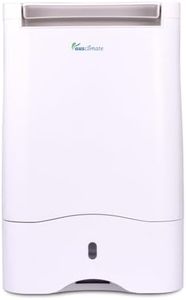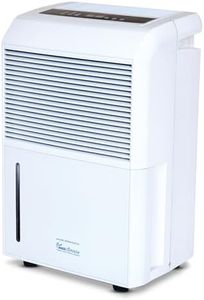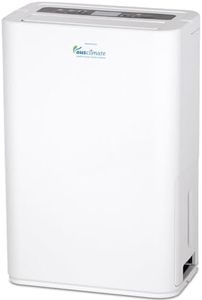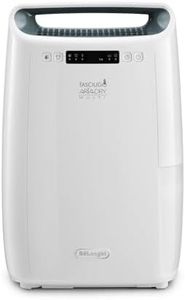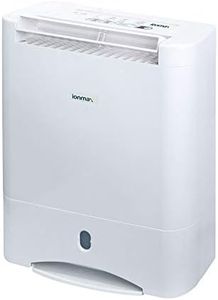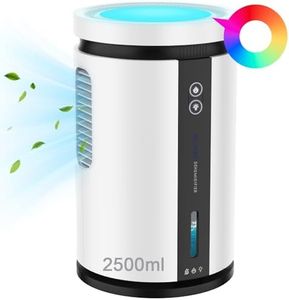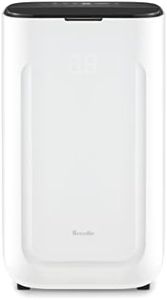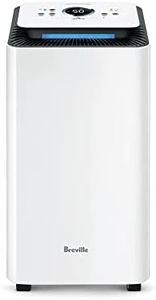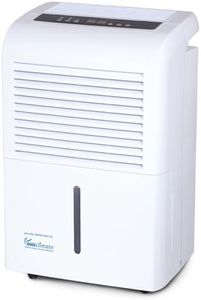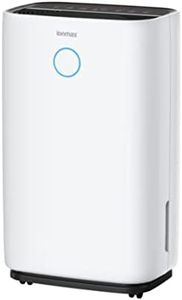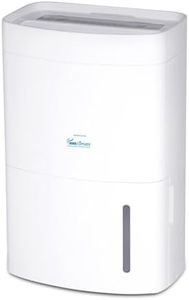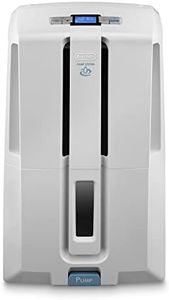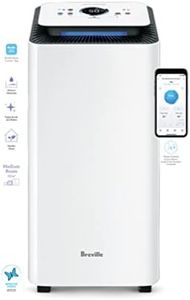We Use CookiesWe use cookies to enhance the security, performance,
functionality and for analytical and promotional activities. By continuing to browse this site you
are agreeing to our privacy policy
10 Best Dehumidifiers For Homes
From leading brands and best sellers available on the web.Buying Guide for the Best Dehumidifiers For Homes
Choosing a dehumidifier for your home can make a big difference in comfort and health by helping to control moisture levels and prevent mold growth. When shopping, it's important to focus not only on how much moisture the unit can remove, but also how easy it is to use, how much energy it consumes, and how well it fits the space you want to dehumidify. Understanding the key specifications will help you find a model that suits your specific needs and lifestyle.Capacity (Pints Per Day)Capacity tells you how much moisture the dehumidifier can remove from the air in a 24-hour period, usually measured in pints per day. This is one of the most important specs because it directly impacts how quickly and effectively your space will dry out. Models are often grouped as small (20–30 pints), medium (30–50 pints), and large (50–70+ pints). If you have a small, slightly damp room, a lower capacity unit may be enough; for larger or very damp spaces, choose a higher capacity unit. Use the size and dampness level of your room as your guide—a basement or laundry area often needs a stronger unit compared to a bedroom.
Coverage Area (Square Feet)The coverage area indicates the maximum space the dehumidifier is designed to handle, usually stated in square feet. This spec matters because using a machine that's too small for the space can lead to poor performance, while one that's too big may use unnecessary energy. Coverage typically ranges from small rooms (up to 300 sq ft) to large areas (over 1500 sq ft). To make the best choice, match the stated coverage area to the size of the room or area where you will use it.
Water Tank CapacityWater tank capacity is the size of the container that collects the condensed water, usually measured in liters or pints. A bigger tank means you won't need to empty it as often, which is helpful for busy households or very damp areas. Tanks can be small (under 1 gallon), medium (1–2 gallons), or large (over 2 gallons). If you want less maintenance or plan to run the unit continuously, opt for a larger tank, or look for a model with a hose connection for direct drainage.
Humidity Control (Humidistat)A humidistat lets you set and maintain your desired humidity level in the room. It's important because keeping indoor humidity within an optimal range (often between 30–50%) helps prevent mold, dust mites, and discomfort. Some units have manual dial controls, while others offer digital settings for more precision. If you want consistent results and less guessing, choose a dehumidifier with an automatic humidistat that shuts off when your chosen level is reached.
Noise LevelNoise level, usually given in decibels (dB), tells you how loud the dehumidifier will be during operation. This is important if you plan to use it in bedrooms or shared living spaces where quiet matters. Dehumidifiers can range from quiet models (under 50 dB, similar to a conversation) to louder ones (over 60 dB). For use in bedrooms or offices, a quieter model is usually more pleasant, while noise may be less important in basements or laundry areas.
Energy EfficiencyEnergy efficiency indicates how much electricity the dehumidifier uses to remove moisture. This spec is often shown by Energy Star certification or by comparing wattage. Higher efficiency saves on power bills and is better for the environment. If you plan to run your dehumidifier for long periods each day, prioritize an energy-efficient model to minimize ongoing energy use.
Auto Restart & Timer FunctionsAuto restart and timer functions help with convenience and safety. Auto restart means the dehumidifier automatically turns back on after a power outage, picking up where it left off, which is especially helpful in areas with unreliable power. Timer functions allow you to program when the unit runs or shuts off, saving energy and allowing more control. Both features are useful if you want hands-off operation or if you're away from home often.
PortabilityPortability means how easy it is to move the dehumidifier from one room to another, depending on its weight, handle, and wheels. A portable unit is ideal if you want to use it in different rooms or for seasonal use. Lighter units or those with sturdy wheels and handles are easier to move, while heavier, bulkier units may be best for a fixed spot.
